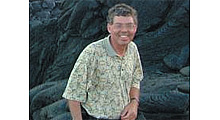NAB Files Petition Challenging FCC's TVStudy Methodology

Doug Lung
The National Association of Broadcasters this week filed a petition for review with the U.S. Court of Appeals for the District of Columbia Circuit challenging certain elements of the FCC's broadcast spectrum incentive auction order.
In its petition, the NAB raises objections over the commission’s adoption of its TVStudy methodology for determining broadcast coverage during channel repacking.
“Under the Spectrum Act, the auction is designed so that broadcast television licensees, including NAB's members, may voluntarily relinquish their spectrum usage rights in exchange for compensation,” the association said in its petition. “The Commission would then reorganize the remaining broadcast spectrum and auction blocks of cleared spectrum to wireless providers, subject to the statutory command that it protect broadcasters that do not relinquish their spectrum usage rights by 'mak[ing] all reasonable efforts to preserve, as of February 22, 2012, the coverage area and population served of each broadcast television licensee, as determined using the methodology described in OET Bulletin 69.'
“Among other objectionable provisions, however, the Order adopts a new methodology, TVStudy, for calculating broadcasters' coverage areas and populations served and fails to take reasonable steps to preserve broadcasters' coverage areas,” the association continued. “Under this new methodology, many broadcast television licensees, including NAB's members, will lose coverage area and population served during the auction's repacking and reassignment process, or be forced to participate in the auction (and relinquish broadcast spectrum rights).”
While I didn't see translators specifically mentioned in the copy of the Petition released by NAB, an NAB New Release said, “The petition also states that the FCC failed to take steps to preserve licensees' coverage areas in repacking, and that the FCC erred in failing to ensure proper protections for broadcast translators, which are transmitters that help boost the coverage of broadcast TV programming to more rural and remote viewers.”
Rick Kaplan, NAB executive vice president of Strategic Planning, said that the NAB doesn’t intend to delay the auction but that it merely hopes that, “if the FCC does not change course on its own, the Court will help put the auction back on the track Congress envisioned so that we can quickly achieve a balanced auction that benefits all stakeholders.”
In the petition, NAB requested the Court “hold unlawful, vacate, enjoin, and set aside the Commission's adoption of TVStudy in the Order and grant such additional relief as may be necessary and appropriate.”
An NAB blog posting, Getting the Auction Back on Track, explains NAB's position in greater detail, stating, “NAB has never advocated for—in words or deeds—any undue delay in the auction. Where we’ve identified concerns with the auction or repacking design, we’ve suggested multiple reasonable and expeditious solutions. Consistent with that approach, we have filed our petition at the outset of the 60-day filing window and we will be seeking expedited review. Our aim is to resolve our core challenges as quickly as possible, so the FCC can immediately return to its auction preparations. We believe the court can help us swiftly address our discrete issues.”
The posting continues, “The FCC incentive auction order, however, does little to ensure that the Commission won’t repack beyond its financial means and that broadcasters won’t get stuck with the bill. Indeed, conservative projections suggest that broadcasters will be out of pocket at least $500 million dollars by the conclusion of the auction and repack. And for what purpose; which broadcasters gain? None. Local broadcasters should not be forced to go out of pocket to help multinational wireless giants.”
The posting concludes, “The net effect of all of these changes (and others) is that broadcasters are effectively left with an auction that benefits everyone else while harming only them. NAB’s lawsuit is not designed to derail the auction, or even slow it down. We are looking for a mid-course correction that better reflects Congress’ intent and that protects broadcasters and the millions of vulnerable over-the-air TV viewers. We believe strongly that the FCC itself can achieve a better balance. If not, with this litigation we can right the ship that puts more spectrum out in the marketplace while ensuring a vibrant and robust broadcasting service for the American people.”
In my July and August RF Technology columns in TV Technology magazine I looked at how the differences in how the current OET-69 way of defining TV station's antenna patterns and the methods used by TVStudy affect coverage and interference.
The professional video industry's #1 source for news, trends and product and tech information. Sign up below.

Doug Lung is one of America's foremost authorities on broadcast RF technology. As vice president of Broadcast Technology for NBCUniversal Local, H. Douglas Lung leads NBC and Telemundo-owned stations’ RF and transmission affairs, including microwave, radars, satellite uplinks, and FCC technical filings. Beginning his career in 1976 at KSCI in Los Angeles, Lung has nearly 50 years of experience in broadcast television engineering. Beginning in 1985, he led the engineering department for what was to become the Telemundo network and station group, assisting in the design, construction and installation of the company’s broadcast and cable facilities. Other projects include work on the launch of Hawaii’s first UHF TV station, the rollout and testing of the ATSC mobile-handheld standard, and software development related to the incentive auction TV spectrum repack. A longtime columnist for TV Technology, Doug is also a regular contributor to IEEE Broadcast Technology. He is the recipient of the 2023 NAB Television Engineering Award. He also received a Tech Leadership Award from TV Tech publisher Future plc in 2021 and is a member of the IEEE Broadcast Technology Society and the Society of Broadcast Engineers.
